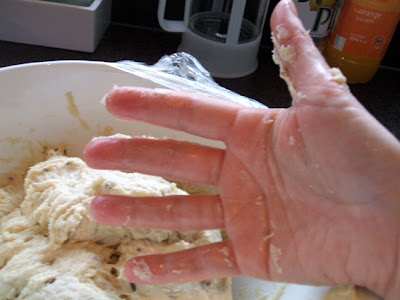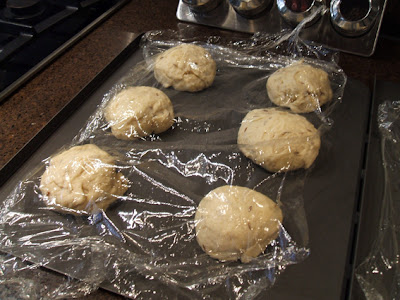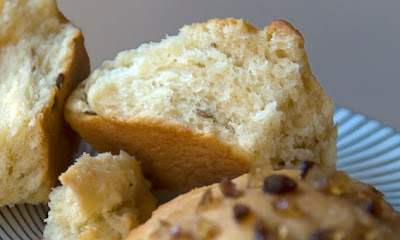
And so we dance a graceful minuet across the country, to take our places within another of the eighteenth century’s spa pleasure resorts – Bath. That’s Bath with a capital B, home to the famous Roman baths, and spa holiday destination to Regency high society. We have the dandyish master of ceremonies, ‘Beau’ Nash, to thank for Bath becoming a beacon for those who came to revive both health and spirits – by taking the waters and pleasure in all forms during the course of the ‘season’. The season being the period between the opening and closing of Parliament, and the time when the fashionable upper-classes met to show off, swap gossip, carry on affairs, party, net a husband/wife, and escape from fossilization on a dusty country estate.
In its hey-day Bath had it all – glorious buildings, a bustling social life, fashionable company, the beauty of its setting in the landscape, and was easily accessible from most parts of the country by coach. Much of its magnificence is still retained, so long as you can see past the swarms of modern visitors. Today’s Bath bun, however, is often a very different fellow from the Bun served in the city during the 1700s, and may shamefacedly appear on the contemporary cake stand as a sorry blimp rather than with proud plumpnesss. Some accounts of the history of the Bath bun suggest that Dr. Oliver, originator of the Bath Oliver biscuit, also knocked up the original of the Bath bun in his Bath bakehouse. I am pretty certain that this is nonsense, not least because the good Doctor as creator of a plain biscuit designed for easy digestion - a salve for overindulged Regency stomachs - was hardly likely Jekyll and Hyde-like to also tempt Bath’s seasonal population with a sugar-topped, butter and egg enriched bun. Other histories attribute the bun to the mythical Sally Lunn – there is a tearoom in Bath of her name –the buns that bear her name are not so different from the Bath bun, both take the form of enriched dough cakes, but they are a separate entity. Laura Mason and Catherine Brown in ‘The Taste of Britain’, trace the origin of the Bath bun to recipes for caraway seed cake. In their book they mention a 1756 recipe given by Bath resident and cook, Martha Bradley, entitled Bath seed cake. Elizabeth Raffald in 1769 follows on with a recipe for Bath cakes, which were yeast-leavened rolls made with butter, cream and caraway seeds (in the form of caraway comfits – sugar coated seeds- some were used to flavour the cakes, and others strewn on top). Over the course of the eighteenth century eggs were added to the mix, as various recipes will attest. A recipe from 1807 reproduced in Andre Simon’s ‘Cereals’ instructs the cook to:
Rub 1 lb. of butter into 2 lb. of fine flour; mix in it 1 lb. of caraway comfits, beat well 12 eggs, leaving out six whites, with 6 spoonfuls of new yeast, and the same quantity of cream made warm; mix all together, and set it by the fire to rise; when made up, strew comfits over them.
During the next century the caraway seeds gave way to peel, citrus zest or dried fruit, and nibbed sugar became the customary decoration. Of the many modern recipes I have for Bath buns, nearly all contain these elements, and produce a yeast-raised, enriched bun, flavoured with lemon peel, topped with tooth busting sugar nibs, and cosy home to a small gathering of dried fruit.
According to the ‘The Taste of Britain’, Mountstevens Ltd. of Bath bake from an adapted version of a 1679 recipe (using mixed spice instead of caraway) – however a browse on the internet reveals that the Mountstevens business stopped trading in 2002 (‘The Taste of Britain’ was first published in its original form in 1999, and revised form in 2006) so whether buns of this historic recipe are still available in the town I do not know. If anyone can let me know, I would appreciate it.
Elizabeth David uses Elizabeth Raffald’s 1769 Bath bun recipe for ‘English Bread and Yeast Cookery’, although she has slightly altered the recipe, swopping cream for milk and topping the buns with sugar rather than caraway comfits (she gives the original form of the recipe in the book). Elizabeth David felt that the Great Exhibition of 1851 was responsible for the decline and devaluing of the Bath bun, as such large numbers of the bun were produced during the course of the Exhibition (nearly one million) and standards become sloppy. Commercial production of the buns often saw lard replacing the butter and cream, and cheaper flavourings used. Buns produced outside of Bath were sometimes known as ‘London Bath buns’ or ‘London buns’. Florence White gives two contrasting recipes for Bath buns in ‘Good Things in England’ – one from 1904 with peel, currants and crushed sugar, and one from the early eighteenth century with sack, rosewater and caraway comfits.
For my try at Bath buns I used the Elizabeth Raffald recipe as revisited by Elizabeth David. Considering the mixed success I have had previously with yeast-leavened buns and loaves, I was a bit nervous about giving the recipe go. But, with the acquisition of new house, new kitchen and new oven since my last attempt, I at least had a new set of circumstances to blame for any failure…
450g white flour (I used strong bread flour - E.D. says, that, or plain will work)
1 teaspoon salt
2 tablespoons caster sugar
225g butter
1 tablespoon caraway seeds (E.D. omits these, but I like the flavour and it is a more ‘authentic’ taste for the buns than lemon, peel etc.)
15 g yeast (fresh) or 7g (dried)
280g warm milk
For glazing:
1 tablespoon milk
2 tablespoons caster sugar
Brown sugar granules for coffee, lightly crushed in a mortar
1. Add the salt and sugar to the flour, then rub in the butter. Stir through the caraway seeds.
2. I used dried yeast so I added this to the butter rubbed flour. If using fresh, first liven it up by adding it to the warm milk.
3. Add the milk and mix ‘to a light dough’. Initially the mixture looks very like cake mix – very moist – but don’t be tempted to add more flour.

Referring to the ‘Leith’s Baking Bible’, the recommended method for hand-kneading soft dough (i.e. with a high butter/fat content), is to take a handful of the dough and pull upwards – then push back down onto the work surface.

You will see from my pictures that although the dough looks quite ‘wet’, it is not sticky and my kneading hand stays pretty clean.

4. Once kneaded, cover the bowl and leave to rise. E.D. suggests this takes about one and a half hours, but it took my dough about two and a half hours to double in volume (the consequence of an English summer, I expect...)
5. Prepare two baking sheets, and use a tablespoon to scoop out 12 portions of dough. Shape into buns and smooth the top surface using a palette knife (or finger). Cover and leave for quarter of hour to regain spring.

6. Bake for 15 to 20 minutes at 375F/190C/Gas 5.
7. Just before the buns have finished cooking, prepare the glaze. Warm the milk and sugar in a small saucepan. As soon as the buns are baked use a pastry brush to anoint the tops and sprinkle with a little of the crushed sugar.
E.D. suggests that if possible eat these buns fresh from the oven. Frankly, it seems quite criminal not to do this, and to waste an opportunity for warm bun savouring. However, if a dozen buns are beyond you in one sitting, then they are good later on split, toasted and spread with a little butter. Eaten fresh they are a bun triumph. The delicate crust has just the right degree of firmness to provide the teeth with the smallest of warm-ups, before sinking into the bun proper. The ‘crumb’ of the bun looks like that of a bread, not cake-like in the way of a brioche - but I think that is down to the strong flour I used, plain flour should result in a more spongey dough. Pre-chemical raising-agents (baking powder etc.) all cakes would have been made using yeast as a leaven, and therefore my Bath buns were a favourable demonstration to me of how such cakes would/could have been, and more successful I felt than the previously baked Saffron cake.

The Bath buns were resplendent with buttery richness, and the quantity of caraway seeds just enough to give extra warmth of flavour. I enjoyed also the occasional crunchy sugar ‘hit’, which allowed my tastebuds to find a counterpoint to the butter. Despite my bread-making inhibitions I found that this recipe (with thanks to my new kitchen?) worked a treat, and these buns were really very good. I am keen now to find another yeast-raised cake recipe to try my hand at, which is good, as I have a fair few tucked up my sleeve for later...
Nigel Slater visits Bath and samples Bath buns (amongst other things).
12 comments:
I usually make bread dough in the mixer as I'm crap at kneading. Would I just put it on a gentler setting for something like this?
Hi Shelaghg,
I don't have a mixer, so I am not sure about settings. I had a look in my 'Leith's Baking Bible' and the only advice I can glean is, start on a low setting and gradually increase (this for all doughs). However, for soft doughs the book does say that these can easily be made using a standing electric mixer, so I am hopeful it shouldn't be too tricky. I like hand-kneading because you can feel when the dough has changed consistency - I don't worry about perfecting technique.
However you make them, I hope you enjoy them!
Dear Ann, I often find directions for 'rubbing in' butter to the flour before adding the yeast, the liquid ingredients, then kneading...
How do you rub in the butter to the dough? Is it in firm flakes, as one does when making a pie crust or short crust?
I bake in America, and for some mysterious reason, I never see this technique mentioned in any American book on yeast baking..
Alexandra K.
Hello Alexandra,
I cut the butter into small pieces as I weigh it out - I find this makes it easier to work with. I rub in using my fingertips, and stop rubbing when I get to the 'breadcrumb' stage. Does this help?
Best wishes.
Fascinating. I used to love Bath buns but clearly have no hope of finding them here. I look forward to trying the recipe! Thanks.
Anna - This is my first visit to your blog, but I'm glad to have discovered it so 'late' as I now have truckloads of archived posts to read. If they are written with the same fluid and approachable manner as this one, I am hooked. I am glad you decided to keep the caraway seeds in the buns; I, too, enjoy their warmth and versatility (buns, cakes, stews...). An interesting and thoroughly discussed post (thanks also for the Leith's kneading method re: doughs with high fat content).
When a dough recipe asks you to rub in small amounts of fat just melt it in warm water and coninue as instructed. I think Baking for Britain is the best blog ever
I just tried making Bath Buns from a recipe in Jane Grigson's Observer Guide to British Cookery. I wasn't satisfied with the bun wash and sugar lumps so I searched around and found your wonderful post. I wish I had seen your advice about kneading the sticky dough. Yours turned out looking much nicer than mine! Here's my post if you're interested. I hope you don't mind that I put a link to your post in mine. http://notarealplace.blogspot.com/2007/12/bath-buns.html
I was given Bertinet's (french baker in Bath) book for xmas and have been seething ever since at its arrogance and the insults to British bread. He reluctantly admits the bath bun is delicious then tries to claim it is french anyway because its "based on the brioche." He then declares them created by a "french girl" what nonsense, Sally Lunn cakes are different to bath buns and anyway she came to England in 1880, some 200-300 years after we already had the Bath bun! French buns and patisserie came be a bit too sickly, recipes like cornwall saffron cake and far more subtle and complex.
Woops Sally Lunn was 1680 not 1880, so the original Bath Bun recipe would only have been around just before in 1679.
PS -tip to make the Bath Bun really delicious make a preferment with the yeast before making the dough>
thank you SOOOOOOOO much for this recipe i will make them immediatly i was going to use a rubbish 'diet' recipe that didn't contain flour or sugar! thank you again
moi
Why do you think fast food is so popular? Here are some of the reasons. it's convenient and it’s inexpensive. You can eat fast food by going through a drive-thru, picking it up, eat it in your car, take it home or take it back to work. now harness the power of mobile technology to allow customers to order and pay on the go.
Click here for more information nearest fast food by me
Post a Comment